Blooms of Spring Kick Off Helene Recovery
North Carolina’s apple crop, the seventh largest in the nation, suffered a severe blow in the aftermath of September’s Hurricane Helene, losing about 20% of its annual production. Growers are now preparing for the next phase of recovery as spring approaches.
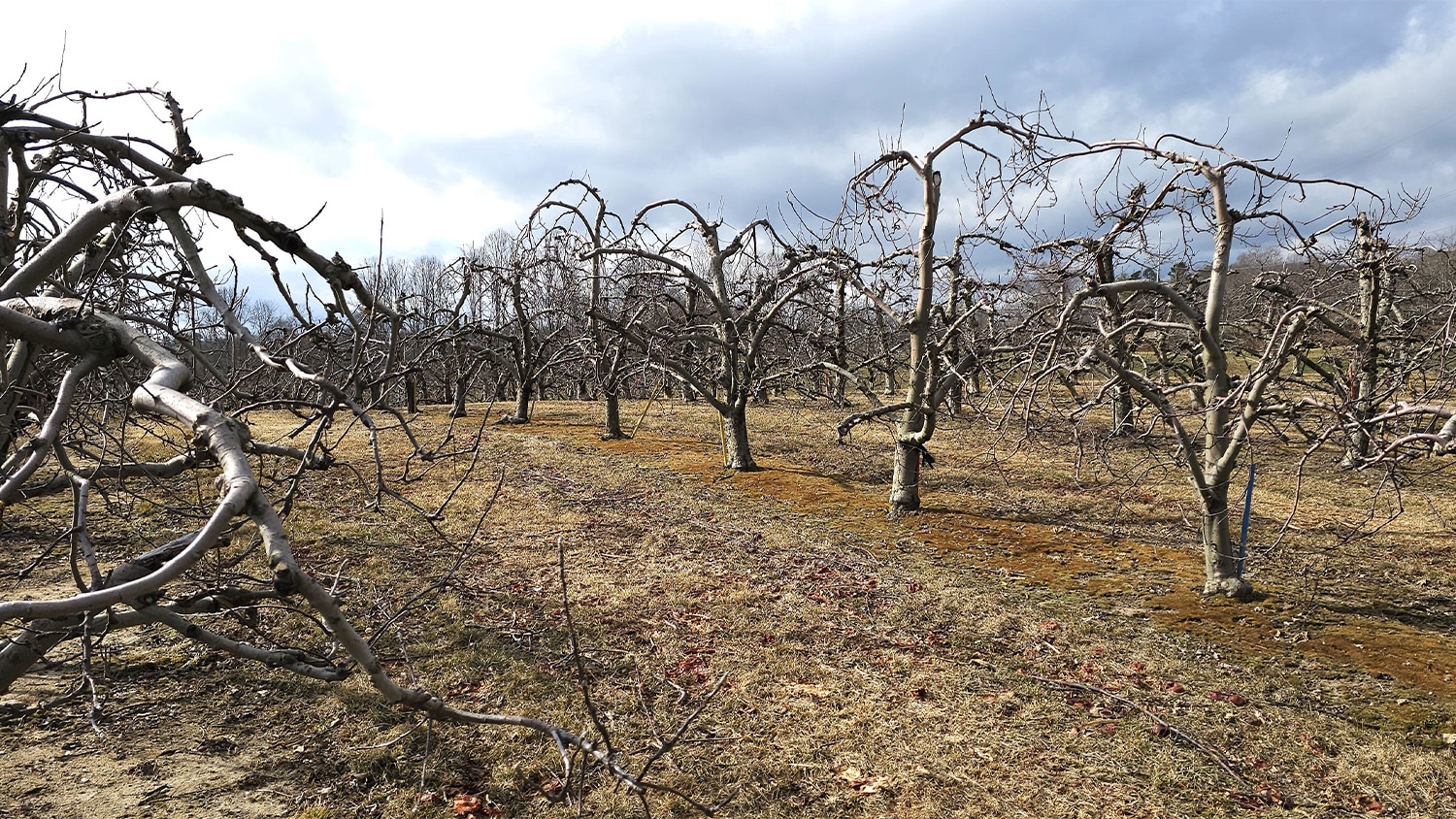
HENDERSONVILLE—Driving up Chimney Rock Road — known as “Apple Alley” here in the southern hills of the Blue Ridge — many of the scrapes and bruises left on the landscape by last September’s Hurricane Helene have barely healed.
This town’s 15-20 apple stands and the you-pick orchards that are an economic lifeline for small family farmers in this tier 3 county are still closed for the winter, though the blooms of spring are starting to pop out of the ground for the growers who have diversified their production to include fresh flowers, on-site bakeries with apple cider doughnuts, hayrides, corn mazes and apple cannons.
Apples are big business in North Carolina, the nation’s seventh-largest producer of red, yellow and bright green fruit varieties. Henderson County, which suffered some of Helene’s worst destruction, grows about 85% of the state’s annual 150 million-pound crop, enough that the county would be the nation’s eighth-largest producer if it was a standalone state.
However, last fall most of Henderson County’s 25 apple stands were closed, except for the few weeks they could salvage of their 12-week fall growing season in the aftermath of western North Carolina’s worst natural disaster.
In nearby Edneyville, an entire hillside owned by grower Jerred Nix (agricultural business management ’04) washed into the overflowing waters of Clear Creek, with rows of mature trees and several pieces of processing equipment swept away in a riverbank sandslide. Nix recently placed an order for 8,000 replacement saplings.
Not everything was lost, of course. Thanks to a diversified business plan, Nix’s operation actually has flourished in some regards in Helene’s aftermath because his family has the state’s only apple-slicing facility.
“The storm has been a curse and a blessing,” Nix says. “We lost a lot of trees and a lot of our apples, but we also have a processing and packing plant. We lost power for a few days there, but once we got it back on again, we haven’t stopped going since.”
Those sliced apples provide a nutritional boost to schools, restaurants and food banks throughout the affected region and beyond North Carolina’s borders.
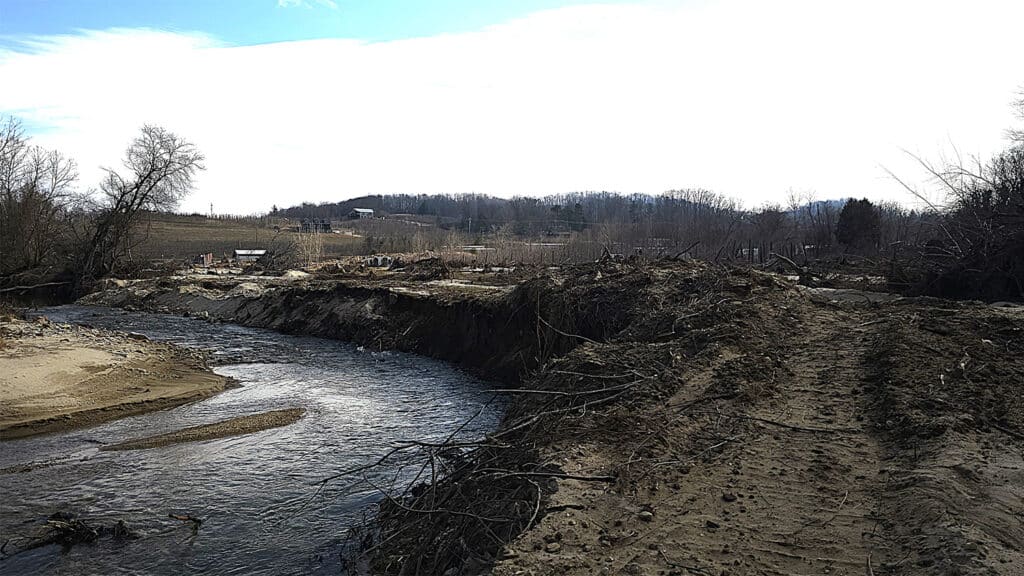
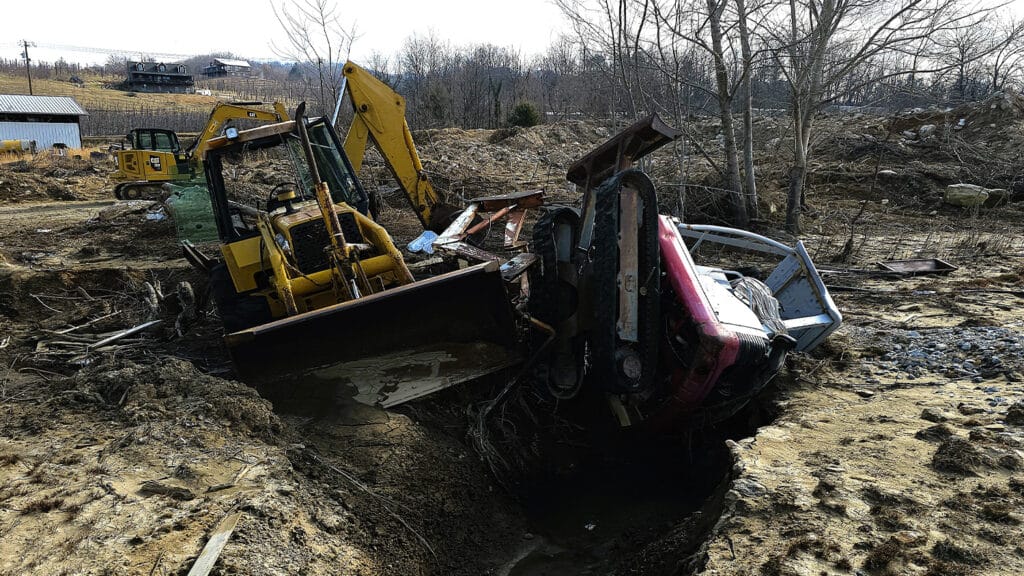
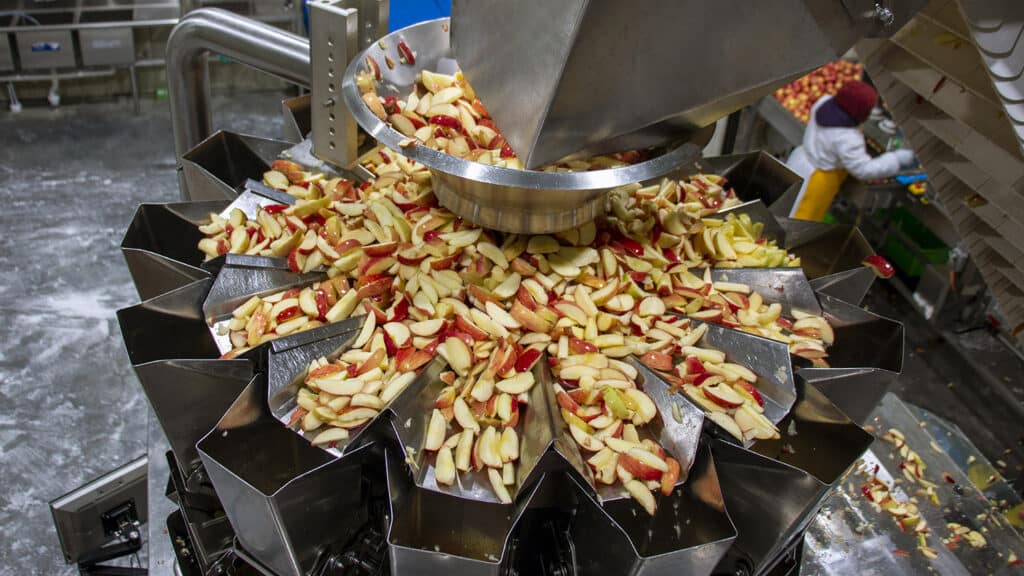
Growers who offer more than just apples have been able to stay afloat — if such a description isn’t an insult to those who survived the 500-year flood caused by Helene’s 22 inches of rainfall — by relying on offerings other than the more than two dozen varieties of apples grown in the region.
Over at Stepp’s Hillcrest Orchard, two generations of NC State Ag Institute graduates spent time earlier this month with their wives on a 3-acre patch of land, spreading fresh mulch on some 30,000 tulip bulbs that will provide the first income of the year for the family operation.
While the farm didn’t lose any of its trees during the storm, both ends of the road where they live washed away, creating an island of loaded apple trees with no access for the hundreds of agritourists who arrive every fall to pick their own produce for pies, jellies, apple butters and dessert sonkers that are only made in the western part of the state.
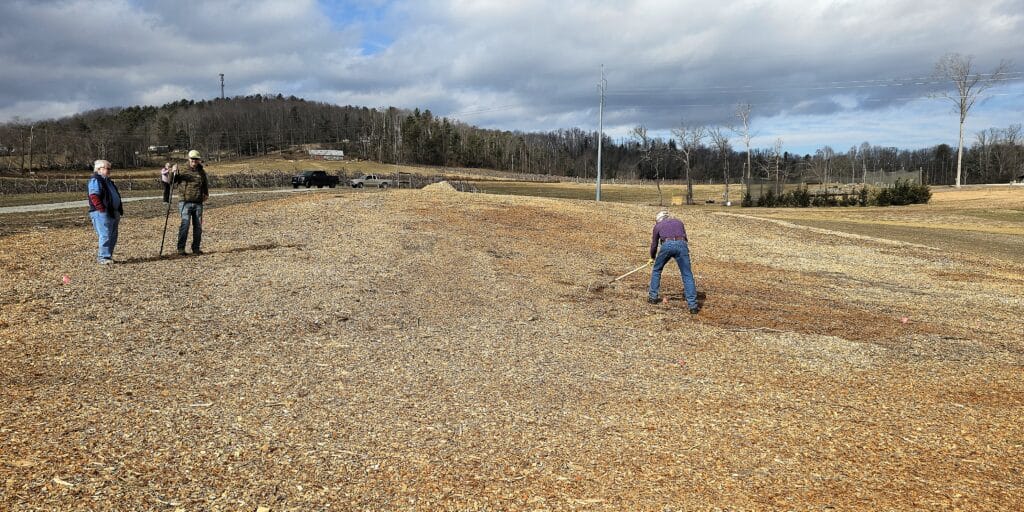
Once road repairs were finished, some apples were salvaged to send to state farmers’ markets in Charlotte and Asheville, though the family lost about 75% of their apple production in the aftermath of the storm.
Like Nix, grower Mike Stepp (pest control ’74) and his son-in-law and business partner Rex McCall (turfgrass management ’92) felt fortunate to have a way to recoup some losses as other growers in the area continue to navigate the corn maze of local, state and federal reimbursement programs that are still hindered by apple-red tape. That causes yet another lingering issue caused by the storm: survivor’s guilt.
“There are other people that are totally devastated,” says Rex McCall. “We were pretty fortunate except for the roads being washed out. We managed to have some income.
“We have neighbors here in the county who didn’t.”
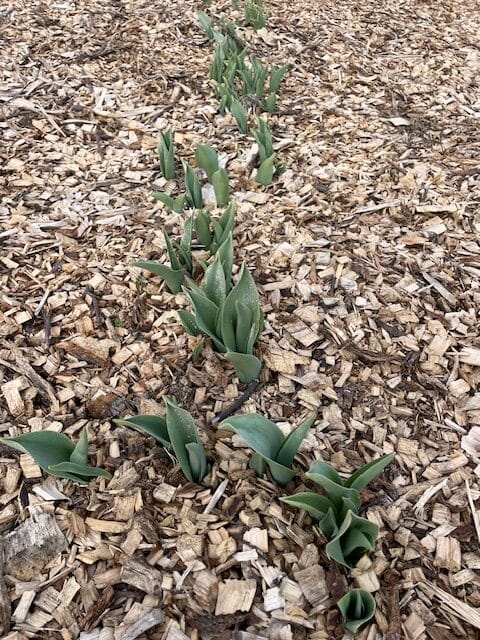
Is the Worst Still To Come?
Even as concerning as lost crops, destroyed equipment and the devastated land are for the growers in this mountain community, the biggest threats to its longstanding family farms have not yet fully emerged.
“I feel like the growers and farmers in this area are going to get checks cut to them in the near future, either from the government or developers,” says William Terry Kelley (agronomy ’84, M.S. crop science ’88), director of the Henderson County center of N.C. Cooperative Extension, a joint program of NC State and North Carolina A&T. “At some point, waiting on recovery money will become too frustrating.”
Development in counties such as Henderson, Buncombe and Madison was a concern before the storm. In the last 10 years, about 20% of Henderson County’s agricultural land has been lost to the urban creep from Asheville, Kelley says.
“If our growers don’t get something soon, I believe some of them will think it’s not worth it to keep growing,” he says. “That’s a real concern.”
Even along Apple Alley, rolling tracts of land that were once devoted to fruit are now apartment complexes and subdivisions, writing a new story of American landscape literature only a few miles from Flat Rock, where three-time Pulitzer Prize winner Carl Sandburg wrote about one-third of his poetry and nonfiction catalogue.
“What we have been trying to do since the storm is help our growers navigate all the state and federal agencies, the U.S. Department of Agriculture programs and the growers’ associations,” says Kelley, who was an associate professor of horticulture at the University of Georgia for 17 years before moving back to his hometown to serve as Henderson County’s fruit extension agent.
Some farmers, growers and residents of the region pinned their hopes on assistance from the Federal Emergency Management Agency, but FEMA is primarily a reimbursement program that only arrives after statewide resources are exhausted, resulting in delays of needed aid.
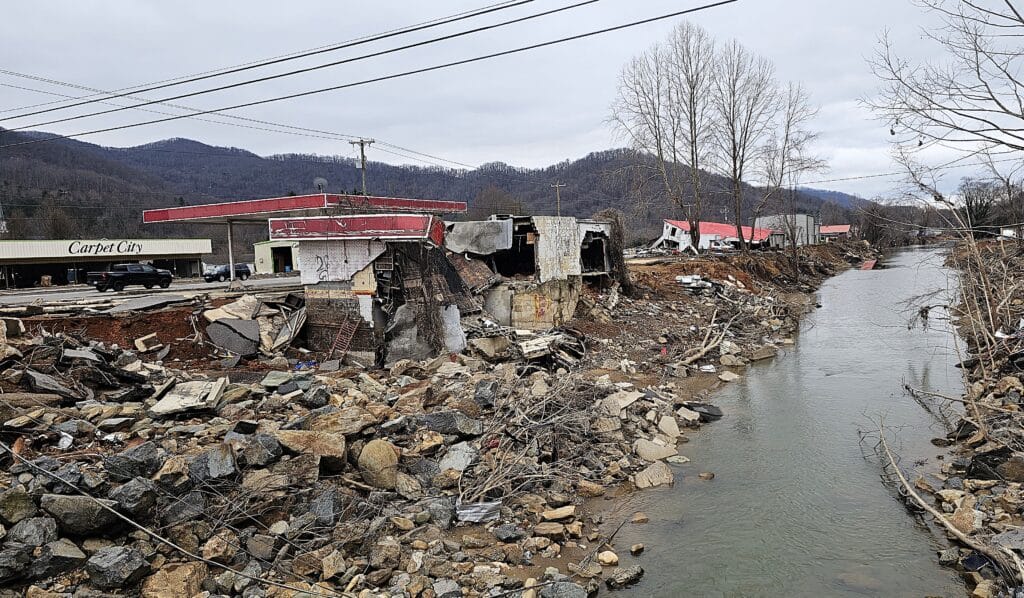
State and federal agencies have been on the ground since the storm passed through, along with nonprofit aid organizations, but that doesn’t mean everyone who needs help has received exactly what they need to reestablish their lives, especially through reimbursement programs..
“People want to know what is coming,” Kelley says. “This kind of hit is not going to be fixed by low-interest loans or USDA grant programs. It’s going to require direct payments to get growers back as close to whole as they can get.
“How long can people hang on before someone steps in to help them? Are we going to be forgotten in all of this?”
Although many here in the foothills and mountains have felt forgotten following the storm, subsequent natural disasters such as the California wildfires have spurred a renewed effort to bring attention to post-Helene recovery initiatives.
Attention, however, doesn’t pay the bills or repay the loans that are part of every family farm operation in the state.
How long can people hang on before someone steps in to help them? Are we going to be forgotten in all of this?
“We’ve got no indication of when relief is going to come, because it is being pulled in so many directions,” Kelley says. “Just in North Carolina, the eastern part of the state has had a drought, and we had a hurricane.
“It’s usually the other way around.”
On Feb. 13, the North Carolina House of Representatives introduced a $475 million agricultural crop disaster recovery act, but crop loss is only about 25% of the significant woes these farmers and growers face.
They also need help replacing infrastructure like roads, bridges, barns, sheds and greenhouses. They need to restore the full-sized, dwarf and trellised trees that were ruined, not just by wind and rushing water but also by contaminated soil that settled at the base of the trees that remain standing and the spoiled groundwater absorbed by root systems. The underground damage still hasn’t been properly assessed.
“We honestly don’t know how long the root systems were submerged or exposed,” Kelley says. “There were floodwaters on top of the ground, but we also had the groundwater below the surface. We don’t know if the foliage this spring and summer is going to overwhelm the root system.
“There’s a lot of information that we still have to get.”
- Categories:


